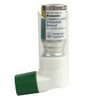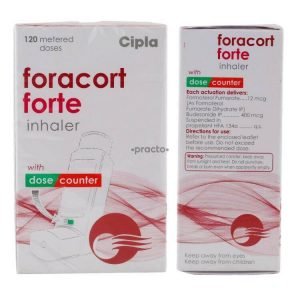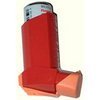
Rabeprazole
October 9, 2020
Beclomethasone
October 9, 2020Ipratropium

Description
Atrovent (Ipratropium Bromide) is an anticholinergic agent used to prevent the symptoms of emphysema or chronic bronchitis. Atrovent (Ipratropium) Synonyms: Apovent, Atronase, Bitrop, Disne-Asmol, Ipatropium Bromide, Ipravent, Ipvent, N-Isopropylatropine, Narilet, Rhinotrop, Rhinovent, Rinatec, Rinoberen, Rinovagos, Vagos. It may also be used to treat other conditions as determined by your doctor.






May

|
 |
Delivery period 14-21 days |
$14.95 | Tracking number not available |

|
 |
Delivery period 5-9 days |
$29.95 | Tracking number available in 2 days |
Price
with Coupon
To Cart
� If you have a soya lecithin allergy (e.g., an allergy to soybeans or peanuts), do not use Atrovent.
� Atrovent is not intended for use during acute bronchospastic attacks (asthma attacks or difficulty breathing). It may not be able to open your airways and allow you to breath. Atrovent is better used to prevent these attacks.
� It is very important that you use the Atrovent inhaler properly, so that the medicine gets into the lungs. Your doctor may recommend you to use a spacer with the inhaler. About proper inhaler use needs to be addressed with your doctor .
� If you notice that you require more than your usual or more than the maximum amount of any asthma medication in a 24-hour period, seek medical attention . An increased need for medication could be an early sign of a serious asthma attack.
�Atrovent is used to prevent bronchospasm by preventing narrowing of the airways, Atrovent increases air flow to the lungs.
�Atrovent is used to treat lung diseases such as chronic bronchitis, emphysema, and sometimes asthma.
�Atrovent may also be used for purposes other than those listed in this medication guide.
What should I discuss with my healthcare provider before using Atrovent?
� If you have a soya lecithin allergy (e.g., soybeans or peanuts), do not use Atrovent.
� Before using this medication, tell your doctor if you have
glaucoma (narrow angle), which may get worse if you use Atrovent; or
an enlarged prostate or a bladder obstruction, which also may get worse if you use Atrovent.
�You may not be able to use Atrovent, or you may require a lower dose or special monitoring during treatment if you have either of the conditions listed above.
�Atrovent is in the FDA pregnancy category B. This means that it is unlikely to be harmful to an unborn baby. Do not, however, use Atrovent without first talking to your doctor if you are pregnant or could become pregnant during treatment.
� If you are breast-feeding a baby , do not use Atrovent without first talking to your doctor. It is not known whether Atrovent passes into breast milk.
�Atrovent is not approved for use by children younger than 12 years of age.
� Atrovent must be taken exactly as directed by your doctor. If you do not understand these instructions, ask your pharmacist, nurse, or doctor to explain them to you.
� To use the inhaler:
Shake the inhaler several times and uncap the mouthpiece. Breathe out fully. Put the mouthpiece of the inhaler or spacer into your mouth. Be sure the mouthpiece is above the tongue and past the teeth. Alternatively, place the inhaler mouthpiece (not with spacer attached) several inches in front of your open mouth, if directed to do so by your doctor. Take a deep, slow breath as you push down on the canister. Hold your breath for 10 seconds, then exhale slowly.
If you take more than one dose at a time, wait for at least 1 full minute, then repeat the procedure. Keep your inhaler clean and dry. Keep the mouthpiece capped to avoid getting dirt inside it. Clean your inhaler once a day by removing the canister and immersing the mouthpiece in warm water. Allow the parts to dry, then reassemble the inhaler.
�To use the solution for nebulization:
Measure the correct amount of medication with the dropper provided or select the prescribed number of ampules. Transfer the liquid into the medication chamber of the nebulizer. If your medication has a dropper, do not allow the dropper to touch any surface including your hands or the chamber of the nebulizer. Dilute the medication with normal saline if prescribed by your doctor.
Attach the mouthpiece or face mask to the drug chamber. Then, attach the drug chamber to the compressor. Sit upright, in a comfortable position, and put the mouthpiece into your mouth or put the face mask on, covering the nose and mouth. Breathe slowly and evenly until all of the medicine has been inhaled (usually 5 to 15 minutes). The treatment is complete when no more mist is formed by the nebulizer and the drug chamber is empty.
Clean the nebulizer after a treatment as directed by the manufacturer.
�It is very important that you use the Atrovent inhaler properly, so that the medicine gets into the lungs. Your doctor may want you to use a spacer with the inhaler. Talk to your doctor about proper inhaler use.
� It is important to use Atrovent regularly to get the most benefit.
� Seek medical attention if you notice that you require more than your usual or more than the maximum amount of any asthma medication in a 24-hour period. An increased need for medication could be an early sign of a serious asthma attack.
� Your doctor may want you to have lung function tests or other medical evaluations during treatment with ipratropium inhalation to monitor progress and side effects.
� Store Atrovent at room temperature away from moisture and heat.
� Use the missed dose as soon as you remember. However, if it is almost time for the next regularly scheduled dose, skip the missed dose and use the next one as directed. Do not use a double dose of this medication.
�An overdose of this medication is unlikely to threaten life. If you suspect that a very large dose has been taken, call your doctor or poison control left for advice. No symptoms of an Atrovent overdose have been reported in the past.
�Avoid getting this medication in the eyes. If this happens, rinse the eyes with water.
�If you experience either of the following serious side effects, stop using Atrovent and seek emergency medical attention or contact your doctor immediately:
an allergic reaction (difficulty breathing; closing of the throat; swelling of the lips, tongue, or face; or hives); or
a racing heart rate.
�Other, less serious side effects may be more likely to occur. Continue to use Atrovent and talk to your doctor if you experience
dizziness or headache;
cough, dry mouth or hoarseness;
nausea, vomiting, or constipation; or
blurred vision.
�Side effects other than those listed here may also occur. Talk to your doctor about any side effect that seems unusual or that is especially bothersome.
�Before using Atrovent, tell your doctor if you are taking any of the medicines:
atropine,
belladonna,
clidinium (Donnatal),
dicyclimine (Quarzan),
popantheline (ProBanthine),
mepenzolate (Cantil),
methantheline (Banthine),
methscopolamine (Pamine), and
scopolamine (Transderm-Scop).
�You may not be able to use Atrovent, or you may require a dosage adjustment or special monitoring during treatment if you are taking any of the medicines listed above.
�Drugs other than those listed here may also interact with Atrovent or affect your condition. Talk to your doctor and pharmacist before taking any prescription or over-the-counter medicines, including vitamins, minerals, and herbal products.



